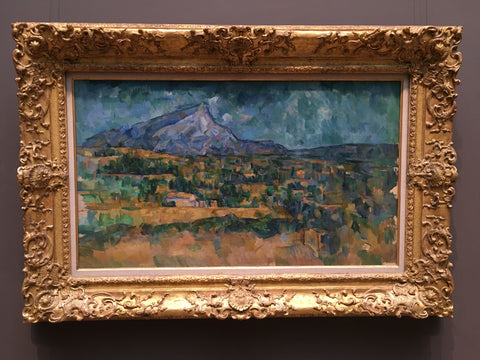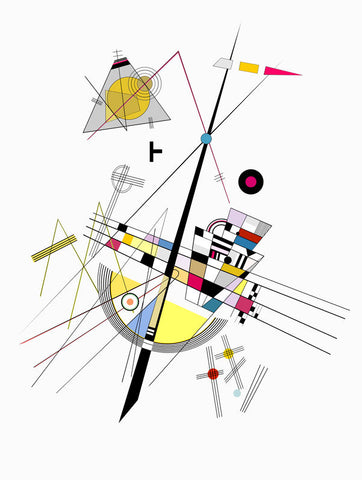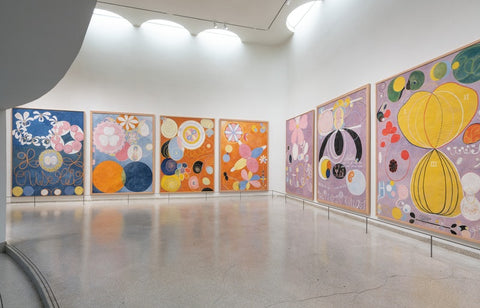It’s an interesting question, that began 160 years ago. So, you could say modern art is quite old.
Within fine art circles, what we call modern painting was first observed among the French impressionists of the 1870s. Paul Cezanne and a handful of his contemporary artists shook the Parisienne art world with their first exhibition of original paintings that challenged all previously accepted understanding of wall art.

This new art on canvas was stylistic and bold. Some viewed it not as representational art at all, but as abstract art. However, it was a revolution that would continue and these pioneers had fathered a contemporary art movement that would lay the foundation for more spin off movements that challenged the art world even more.
This new atmosphere of experimentation and contemporary artistic expression would begin to fill galleries with wall art that was both original art on canvas, and modern art that had found some of its inspiration in the art prints of Japan.
Within a very short time, for the art world that is, with the turn of the century, came a new movement. A movement that would rock the art world even more that modern art.
Abstract art. But it was not in the bohemian communities of Paris that this contemporary art form would blossom. Abstract art was burgeoning in far flung places that were darker and colder than middle Europe. Scandinavia and Russia are where abstract art first pricked the convention of wall art being representational and figurative.
For many years, Russian artist Wassily Kandinsky was regarded as the first artist to take shape and form beyond the realms of traditional visual recognition of an object or a person. He painted feelings, impulses, he responded to stimulus with bold brush strokes and washes of colour that made no attempt to illustrate anything in particular, except for a thought or and emotion.

And whilst Kandinsky was indeed the first male to demonstrate this original style of painting, he wasn’t the first artist. In fact, he was preceded by 6 years, by a woman. In Sweden.
Because in 1905, a student of the Royal College of Art in Stockholm commenced a collection of art on canvas that combined geometric shapes with organic forms and rhythmic patterns in a colour palette that demanded attention from the observer. Hilma af Klint was a shy, sensitive young woman who claimed she channeled a spirit from ‘the other side’, named Amaliel, who instructed her on what art on canvas she was to paint. According to Hilma, Amaliel ‘even took control of her hand’ across the canvas. The result was abstract art that would represent familiar motifs in modern painting for decades to come.

Modern art as a movement spread across the globe and reached its inevitable conclusion in the early 70s. Simply because the passage of time brought it a to a point where it seemed natural to talk about art being created, be it on canvas or art prints, was by virtue of it being of ‘now’, it would from there on be referred to as, contemporary art.
And as is typically cyclical in all art forms, it is no longer all about just abstraction in modern art. Original paintings since the 70s have been everything from representational realism to expressionistic wall art.
In this new millennium, it is not unusual to see wall art that is a cross section of every kind of modern painting, and art prints, mixed in together.
Leave a comment
Comments will be approved before showing up.




